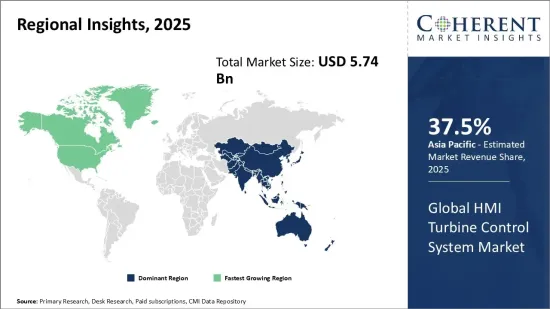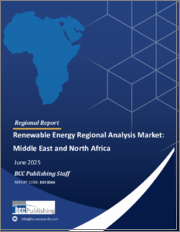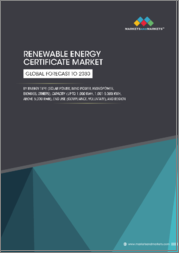
|
시장보고서
상품코드
1729678
HMI 터빈 제어 시스템 시장 : 제품별, 기능별, 지역별HMI Turbine Control System Market, By Product, By Function, By Geography |
||||||
HMI 터빈 제어 시스템 세계 시장은 2025년에 57억 4,000만 달러로 추정되며, 2032년에는 83억 6,000만 달러에 달할 것으로 예상되며, 2025년부터 2032년까지 5.5%의 연평균 성장률(CAGR)을 기록할 것으로 예상됩니다.
| 보고서 범위 | 보고서 상세 | ||
|---|---|---|---|
| 기준 연도 | 2024년 | 2025년 시장 규모 | 57억 4,000만 달러 |
| 실적 데이터 | 2020-2024년 | 예측 기간 | 2025-2032년 |
| 예측 기간 : 2025-2032년 CAGR | 5.50% | 2032년 가치 예측 | 83억 6,000만 달러 |

HMI 터빈 제어 시스템 세계 시장은 급속한 산업화와 발전 공정 최적화에 대한 요구가 증가함에 따라 지난 10년간 꾸준히 성장해 왔으며, HMI 터빈 제어 시스템은 안전하고 효율적이며 신뢰할 수 있는 작동을 보장하기 위해 작업자와 터빈 간의 원활한 통신을 용이하게 하는 인간-기계 인터페이스입니다. 인간과 터빈 간의 원활한 통신을 용이하게 하는 휴먼-머신 인터페이스입니다. 중요한 파라미터의 실시간 모니터링, 이상 상태로부터의 자동 보호, 원격 관리 기능을 제공합니다. 가스 터빈, 증기 터빈, 수력 터빈의 설치가 각 산업 분야에서 확산되면서 고급 제어 솔루션에 대한 수요가 증가하고 있으며, HMI 터빈 제어 시스템 시장은 에너지 수요 증가와 사물인터넷(IoT) 및 인공지능을 산업 제어 인프라에 통합하는 데 주력하고 있습니다. 향후 몇 년 동안 큰 성장이 예상됩니다.
시장 역학
HMI 터빈 제어 시스템 시장을 촉진하는 주요 요인으로는 노후화된 전력 인프라 업그레이드에 대한 투자 증가, 터빈의 예지보전에 대한 관심 증가, 전 세계 재생에너지 용량의 확대 등을 들 수 있습니다. 그러나 이러한 솔루션의 도입과 유지보수에 소요되는 높은 초기 비용이 큰 문제점으로 지적되고 있습니다. 클라우드 컴퓨팅, AI를 활용한 상태 모니터링, 증강현실/가상현실 분야의 기술 발전은 벤더들에게 유리한 기회를 제공합니다. 석유 및 가스 매장량이 풍부한 지역과 발전 능력을 강화하고 있는 신흥 경제 국가들은 강력한 성장 환경을 보여주고 있습니다. 반면, 엄격한 사이버 보안 규제와 독립 발전사업자 모델의 채택 확대는 시장에 부정적인 영향을 미치고 있습니다.
본 조사의 주요 특징
세계의 HMI 터빈 제어 시스템 시장에 대해 조사 분석했으며, 2024년을 기준 연도로 하여 예측 기간(2025-2032년)의 시장 규모(10억 달러)와 연평균 성장률(CAGR)을 조사 분석하여 전해드립니다.
또한, 다양한 부문에 걸친 잠재적 수익 기회를 밝히고, 이 시장의 매력적인 투자 제안 매트릭스를 설명합니다.
또한 시장 촉진요인, 억제요인, 기회, 신제품 출시 및 승인, 시장 동향, 지역별 전망, 주요 기업의 경쟁 전략 등에 대한 중요한 인사이트를 제공합니다.
이 보고서는 HMI 터빈 제어 시스템 세계 시장의 주요 기업들을 기업 개요, 제품 포트폴리오, 주요 특징, 실적, 전략 등의 매개 변수를 기반으로 프로파일링합니다.
이 보고서의 인사이트를 통해 마케팅 담당자와 기업 경영진은 향후 제품 출시, 유형화, 시장 확대, 마케팅 전략에 대한 정보에 입각한 의사결정을 내릴 수 있습니다.
HMI 터빈 제어 시스템 세계 시장 보고서는 투자자, 공급업체, 제품 제조업체, 유통업체, 신규 진입자, 재무 분석가 등 업계의 다양한 이해관계자를 대상으로 합니다.
이해관계자들은 세계 HMI 터빈 제어 시스템 시장 분석에 사용되는 다양한 전략 매트릭스를 통해 의사결정을 쉽게 내릴 수 있습니다.
목차
제1장 조사 목적과 가정
- 조사 목적
- 가정
- 약어
제2장 시장 전망
- 보고서 설명
- 시장 정의와 범위
- 주요 요약
제3장 시장 역학, 규제, 동향 분석
- 시장 역학
- 영향 분석
- 주요 하이라이트
- 규제 시나리오
- 제품 발매/승인
- PEST 분석
- PORTER의 분석
- 시장 기회
- 규제 시나리오
- 주요 발전
- 업계 동향
제4장 세계의 HMI 터빈 제어 시스템 시장, 제품별, 2020-2032년
- 가스 터빈 제어 시스템
- 증기 터빈 제어 시스템
- 풍력 터빈 제어 시스템
- 수력 터빈 제어 시스템
- 기타
제5장 세계의 HMI 터빈 제어 시스템 시장, 기능별, 2020-2032년
- 속도 제어
- 온도 제어
- 압력 제어
- 부하 제어
- 기타
제6장 세계의 HMI 터빈 제어 시스템 시장, 지역별, 2020-2032년
- 북미
- 미국
- 캐나다
- 라틴아메리카
- 브라질
- 아르헨티나
- 멕시코
- 기타 라틴아메리카
- 유럽
- 독일
- 영국
- 스페인
- 프랑스
- 이탈리아
- 러시아
- 기타 유럽
- 아시아태평양
- 중국
- 인도
- 일본
- 호주
- 한국
- ASEAN
- 기타 아시아태평양
- 중동
- GCC 국가
- 이스라엘
- 기타 중동
- 아프리카
- 남아프리카공화국
- 북아프리카
- 중앙아프리카
제7장 경쟁 구도
- Siemens AG
- General Electric(GE)
- Schneider Electric
- Mitsubishi Electric
- Honeywell International Inc.
- Rockwell Automation
- Emerson Electric Co.
- ABB Ltd.
- Yokogawa Electric Corporation
- Bachmann electronic GmbH
- Ingeteam
- Kongsberg Gruppen
- Moxa Inc.
- WAGO Kontakttechnik GmbH
- Omron Corporation
제8장 애널리스트의 추천사항
- Wheel of Fortune
- 애널리스트의 견해
- Coherent Opportunity Map
제9장 참고문헌과 조사 방법
- 참고문헌
- 조사 방법
- 출판사 소개
Global HMI Turbine Control System Market is estimated to be valued at USD 5.74 Bn in 2025 and is expected to reach USD 8.36 Bn by 2032, growing at a compound annual growth rate (CAGR) of 5.5% from 2025 to 2032.
| Report Coverage | Report Details | ||
|---|---|---|---|
| Base Year: | 2024 | Market Size in 2025: | USD 5.74 Bn |
| Historical Data for: | 2020 To 2024 | Forecast Period: | 2025 To 2032 |
| Forecast Period 2025 to 2032 CAGR: | 5.50% | 2032 Value Projection: | USD 8.36 Bn |

The global HMI turbine control system market has been growing steadily over the past decade owing to rapid industrialization and increasing need for the optimization of power generation processes. An HMI turbine control system is a human-machine interface that facilitates seamless communication between operators and turbines to ensure safe, efficient, and reliable operations. It offers real-time monitoring of critical parameters, automated protection against abnormal conditions, and remote management capabilities. With widespread installation of gas, steam, and hydro turbines across industries, the demand for advanced control solutions is on the rise. The HMI turbine control system market is expected to witness significant growth in the coming years due to growing energy demand and focus on integrating Internet of Things (IoT) and artificial intelligence into industrial control infrastructure.
Market Dynamics
The key drivers propelling the HMI turbine control system market include increasing investments in upgrading aging power infrastructure, rising focus on predictive maintenance of turbines, and global expansion of renewable energy capacity. However, high initial costs of deployment and maintenance of these solutions pose a major challenge. Technological advancements in areas of cloud computing, AI-enabled condition monitoring, and augmented/virtual reality provide lucrative opportunities for vendors. Geographies with abundant oil & gas reserves and developing economies ramping up power generation capacity present a strong growth environment. On the other hand, stringent cybersecurity regulations and growing adoption of independent power producer models impact the market adversely.
Key Features of the Study
This report provides in-depth analysis of the global HMI turbine control system market, and provides market size (USD Bn) and compound annual growth rate (CAGR%) for the forecast period (2025-2032), considering 2024 as the base year
It elucidates potential revenue opportunities across different segments and explains attractive investment proposition matrices for this market
This study also provides key insights about market drivers, restraints, opportunities, new product launches or approvals, market trends, regional outlook, and competitive strategies adopted by key players
It profiles key players in the global HMI Turbine Control System market based on the following parameters - company highlights, products portfolio, key highlights, financial performance, and strategies
Key companies covered as a part of this study include Siemens AG, General Electric (GE), Schneider Electric, Mitsubishi Electric, Honeywell International Inc., Rockwell Automation, Emerson Electric Co., ABB Ltd., Yokogawa Electric Corporation, Bachmann electronic GmbH, Ingeteam, Kongsberg Gruppen, Moxa Inc., WAGO Kontakttechnik GmbH, and Omron Corporation
Insights from this report would allow marketers and the management authorities of the companies to make informed decisions regarding their future product launches, type up-gradation, market expansion, and marketing tactics
The global HMI turbine control system market report caters to various stakeholders in this industry including investors, suppliers, product manufacturers, distributors, new entrants, and financial analysts
Stakeholders would have ease in decision-making through various strategy matrices used in analyzing the global HMI turbine control system market
Market Segmentation
- Product Insights (Revenue, USD Bn, 2020 - 2032)
- Gas Turbine Control System
- Steam Turbine Control System
- Wind Turbine Control System
- Hydro Turbine Control System
- Others
- Function Insights (Revenue, USD Bn, 2020 - 2032)
- Speed Control
- Temperature Control
- Pressure Control
- Load Control
- Others
- Regional Insights (Revenue, USD Bn, 2020 - 2032)
- North America
- U.S.
- Canada
- Latin America
- Brazil
- Argentina
- Mexico
- Rest of Latin America
- Europe
- Germany
- U.K.
- Spain
- France
- Italy
- Russia
- Rest of Europe
- Asia Pacific
- China
- India
- Japan
- Australia
- South Korea
- ASEAN
- Rest of Asia Pacific
- Middle East
- GCC Countries
- Israel
- Rest of Middle East
- Africa
- South Africa
- North Africa
- Central Africa
- Company Profiles:
- Siemens AG
- General Electric (GE)
- Schneider Electric
- Mitsubishi Electric
- Honeywell International Inc.
- Rockwell Automation
- Emerson Electric Co.
- ABB Ltd.
- Yokogawa Electric Corporation
- Bachmann electronic GmbH
- Ingeteam
- Kongsberg Gruppen
- Moxa Inc.
- WAGO Kontakttechnik GmbH
- Omron Corporation
Table of Contents
1. Research Objectives and Assumptions
- Research Objectives
- Assumptions
- Abbreviations
2. Market Purview
- Report Description
- Market Definition and Scope
- Executive Summary
- Global HMI Turbine Control System Market, By Product
- Global HMI Turbine Control System Market, By Function
- Global HMI Turbine Control System Market, By Region
3. Market Dynamics, Regulations, and Trends Analysis
- Market Dynamics
- Impact Analysis
- Key Highlights
- Regulatory Scenario
- Product Launches/Approvals
- PEST Analysis
- PORTER's Analysis
- Market Opportunities
- Regulatory Scenario
- Key Developments
- Industry Trends
4. Global HMI Turbine Control System Market, By Product, 2020-2032, (USD Bn)
- Introduction
- Market Share Analysis, 2025 and 2032 (%)
- Y-o-Y Growth Analysis, 2021 - 2032
- Segment Trends
- Gas Turbine Control System
- Introduction
- Market Size and Forecast, and Y-o-Y Growth, 2020-2032, (USD Bn)
- Steam Turbine Control System
- Introduction
- Market Size and Forecast, and Y-o-Y Growth, 2020-2032, (USD Bn)
- Wind Turbine Control System
- Introduction
- Market Size and Forecast, and Y-o-Y Growth, 2020-2032, (USD Bn)
- Hydro Turbine Control System
- Introduction
- Market Size and Forecast, and Y-o-Y Growth, 2020-2032, (USD Bn)
- Others
- Introduction
- Market Size and Forecast, and Y-o-Y Growth, 2020-2032, (USD Bn)
5. Global HMI Turbine Control System Market, By Function, 2020-2032, (USD Bn)
- Introduction
- Market Share Analysis, 2025 and 2032 (%)
- Y-o-Y Growth Analysis, 2021 - 2032
- Segment Trends
- Speed Control
- Introduction
- Market Size and Forecast, and Y-o-Y Growth, 2020-2032, (USD Bn)
- Temperature Control
- Introduction
- Market Size and Forecast, and Y-o-Y Growth, 2020-2032, (USD Bn)
- Pressure Control
- Introduction
- Market Size and Forecast, and Y-o-Y Growth, 2020-2032, (USD Bn)
- Load Control
- Introduction
- Market Size and Forecast, and Y-o-Y Growth, 2020-2032, (USD Bn)
- Others
- Introduction
- Market Size and Forecast, and Y-o-Y Growth, 2020-2032, (USD Bn)
6. Global HMI Turbine Control System Market, By Region, 2020 - 2032, Value (USD Bn)
- Introduction
- Market Share (%) Analysis, 2025,2028 & 2032, Value (USD Bn)
- Market Y-o-Y Growth Analysis (%), 2021 - 2032, Value (USD Bn)
- Regional Trends
- North America
- Introduction
- Market Size and Forecast, By Product, 2020 - 2032, Value (USD Bn)
- Market Size and Forecast, By Function, 2020 - 2032, Value (USD Bn)
- Market Size and Forecast, By Country, 2020 - 2032, Value (USD Bn)
- U.S.
- Canada
- Latin America
- Introduction
- Market Size and Forecast, By Product, 2020 - 2032, Value (USD Bn)
- Market Size and Forecast, By Function, 2020 - 2032, Value (USD Bn)
- Market Size and Forecast, By Country, 2020 - 2032, Value (USD Bn)
- Brazil
- Argentina
- Mexico
- Rest of Latin America
- Europe
- Introduction
- Market Size and Forecast, By Product, 2020 - 2032, Value (USD Bn)
- Market Size and Forecast, By Function, 2020 - 2032, Value (USD Bn)
- Market Size and Forecast, By Country, 2020 - 2032, Value (USD Bn)
- Germany
- U.K.
- Spain
- France
- Italy
- Russia
- Rest of Europe
- Asia Pacific
- Introduction
- Market Size and Forecast, By Product, 2020 - 2032, Value (USD Bn)
- Market Size and Forecast, By Function, 2020 - 2032, Value (USD Bn)
- Market Size and Forecast, By Country, 2020 - 2032, Value (USD Bn)
- China
- India
- Japan
- Australia
- South Korea
- ASEAN
- Rest of Asia Pacific
- Middle East
- Introduction
- Market Size and Forecast, By Product, 2020 - 2032, Value (USD Bn)
- Market Size and Forecast, By Function, 2020 - 2032, Value (USD Bn)
- Market Size and Forecast, By Country, 2020 - 2032, Value (USD Bn)
- GCC Countries
- Israel
- Rest of Middle East
- Africa
- Introduction
- Market Size and Forecast, By Product, 2020 - 2032, Value (USD Bn)
- Market Size and Forecast, By Function, 2020 - 2032, Value (USD Bn)
- Market Size and Forecast, By Country/Region, 2020 - 2032, Value (USD Bn)
- South Africa
- North Africa
- Central Africa
7. Competitive Landscape
- Siemens AG
- Company Highlights
- Product Portfolio
- Key Developments
- Financial Performance
- Strategies
- General Electric (GE)
- Company Highlights
- Product Portfolio
- Key Developments
- Financial Performance
- Strategies
- Schneider Electric
- Company Highlights
- Product Portfolio
- Key Developments
- Financial Performance
- Strategies
- Mitsubishi Electric
- Company Highlights
- Product Portfolio
- Key Developments
- Financial Performance
- Strategies
- Honeywell International Inc.
- Company Highlights
- Product Portfolio
- Key Developments
- Financial Performance
- Strategies
- Rockwell Automation
- Company Highlights
- Product Portfolio
- Key Developments
- Financial Performance
- Strategies
- Emerson Electric Co.
- Company Highlights
- Product Portfolio
- Key Developments
- Financial Performance
- Strategies
- ABB Ltd.
- Company Highlights
- Product Portfolio
- Key Developments
- Financial Performance
- Strategies
- Yokogawa Electric Corporation
- Company Highlights
- Product Portfolio
- Key Developments
- Financial Performance
- Strategies
- Bachmann electronic GmbH
- Company Highlights
- Product Portfolio
- Key Developments
- Financial Performance
- Strategies
- Ingeteam
- Company Highlights
- Product Portfolio
- Key Developments
- Financial Performance
- Strategies
- Kongsberg Gruppen
- Company Highlights
- Product Portfolio
- Key Developments
- Financial Performance
- Strategies
- Moxa Inc.
- Company Highlights
- Product Portfolio
- Key Developments
- Financial Performance
- Strategies
- WAGO Kontakttechnik GmbH
- Company Highlights
- Product Portfolio
- Key Developments
- Financial Performance
- Strategies
- Omron Corporation
- Company Highlights
- Product Portfolio
- Key Developments
- Financial Performance
- Strategies
8. Analyst Recommendations
- Wheel of Fortune
- Analyst View
- Coherent Opportunity Map
9. References and Research Methodology
- References
- Research Methodology
- About us



















